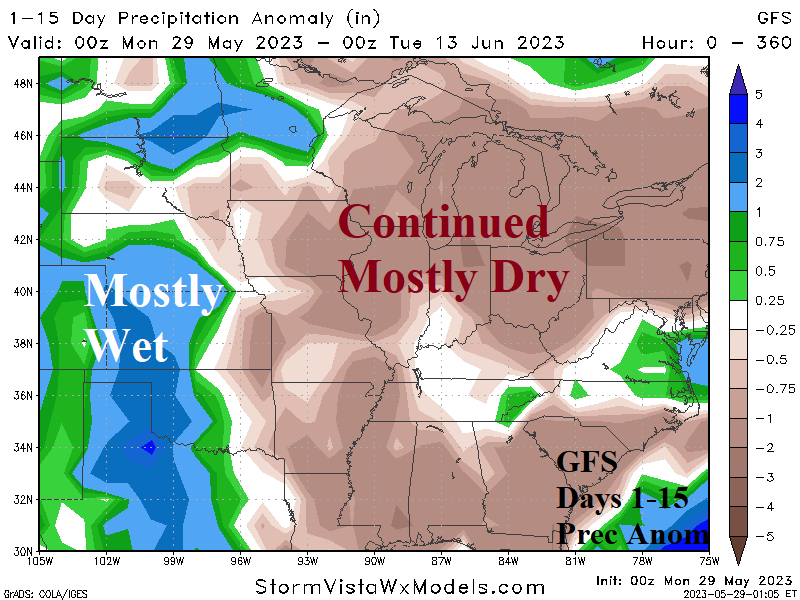Sharp Negative Southern Oscillation Index as El Nino Climate Developing
05/24/2023, 7:53 am EDT
Midwest U.S. Continues to Dry Out
05/29/2023, 9:16 am EDTDiscussion: Regions of anomalous SSTA regimes in the North Atlantic basin are dramatic! Let’s begin with the North Atlantic warm hole (NAWH). This feature is not new, however the presence and influence on climate has increased dramatically during the past 10 years. The NAWH is the result of cold-water stratification from the Labrador Sea to south of Greenland as the result of increased speed of ice melt each spring season. The NAWH is displaced farther west, east of New England and off the southeast coast of Canada, compared to the usual location. The NAWH pattern caused a cooler than normal May to emerge in the East U.S. after a record warm JAN-APR period. Another upper trough returns cool weather to the East in the extended range related to the (cooling) effect of the NAWH.
The NOAA/NHC tropical cyclone outlook for 2023 is issued today. An El Nino is ahead, normally suppressing tropical activity. However, the tropical/subtropical North Atlantic basin is somewhat warmer than normal in the main development region (MDR) for hurricanes between the Caribbean Sea and Cape Verde Islands. The warm water indicates the number of stronger tropical cyclones will be higher than normal for an El Nino year. The Gulf of Mexico is also much warmer than normal putting the Gulf of Mexico at risk of a significant tropical cyclone in 2023 despite the El Nino climate.
Marine heat waves (MHW) have become a force on global climate during the past 10 years. A new MHW has emerged this year off the northwest coast of Africa, western Mediterranean Sea, and west of Europe. Across MHW’s, upper-level high pressure forms and caused drought in Northwest Africa to Southwest Europe. The MHW shifted westward slightly during recent weeks which caused long-term drought in Italy to reverse sharply wetter. The concern this summer is the MHW pattern will lead to another amplified upper ridge causing another dry-to-drought scenario in Europe for upcoming summer.
![Climate-Impact-Company-logo-sm[1]](https://climateimpactcompany.com/wp-content/uploads/2023/08/Climate-Impact-Company-logo-sm1.png)